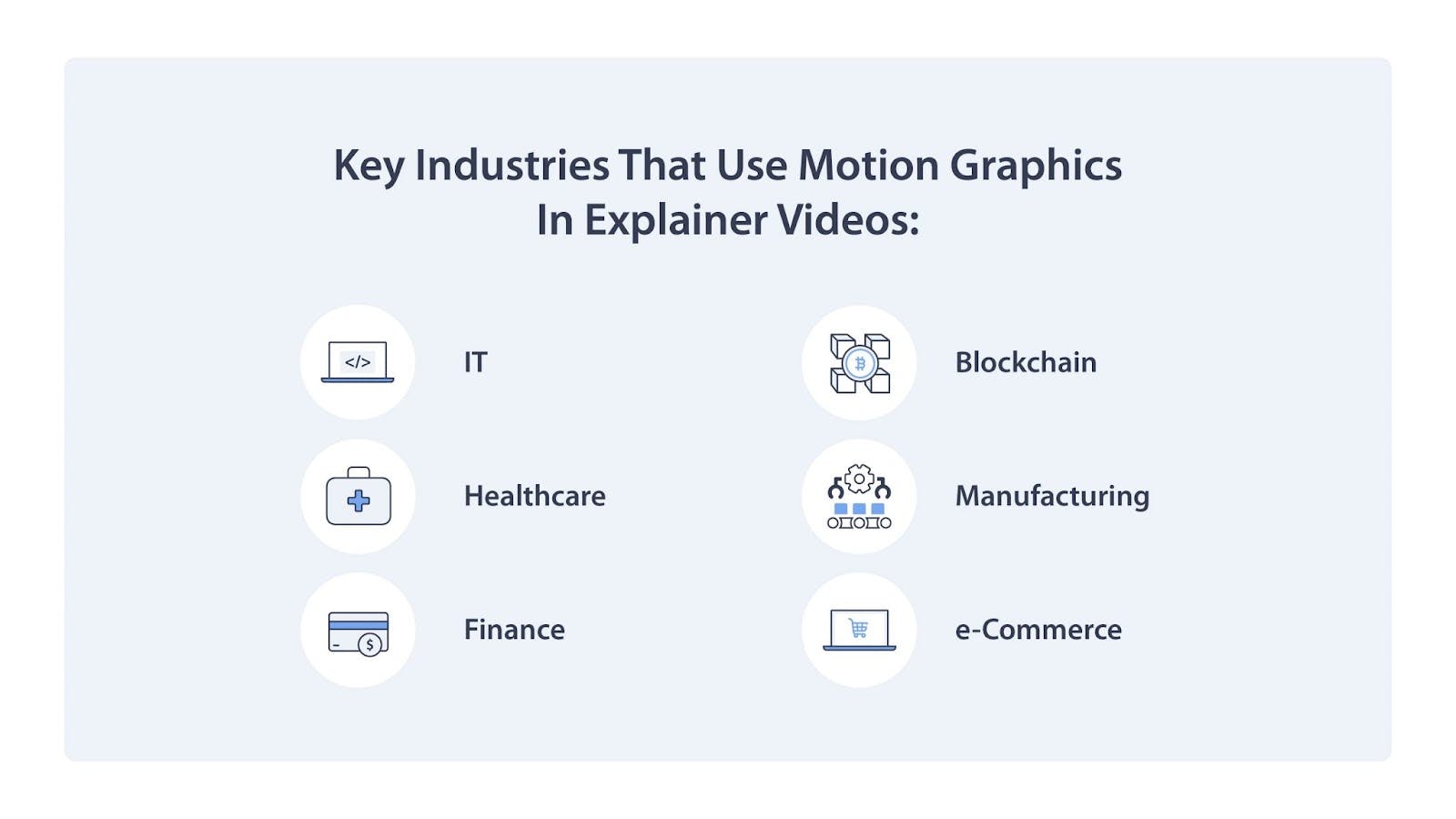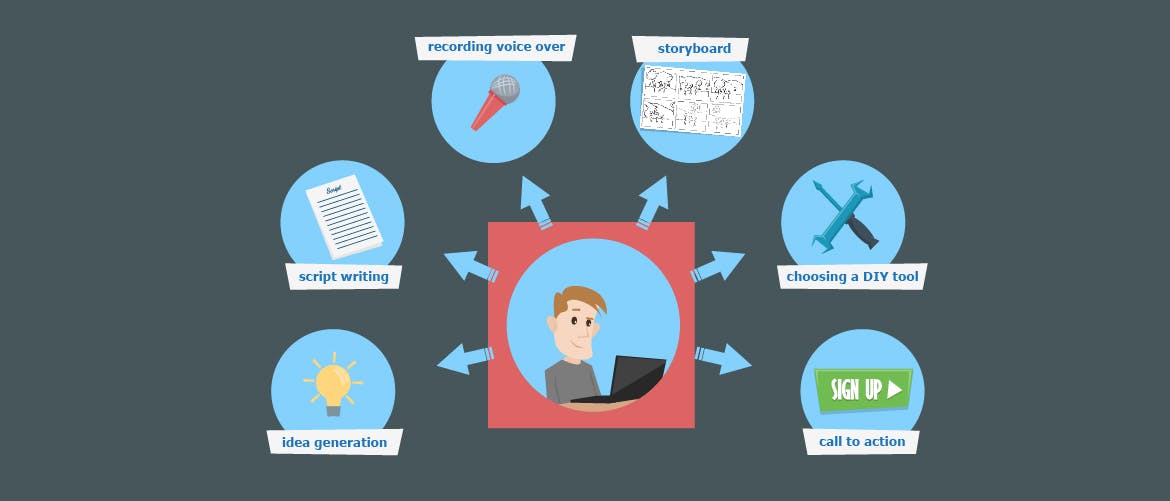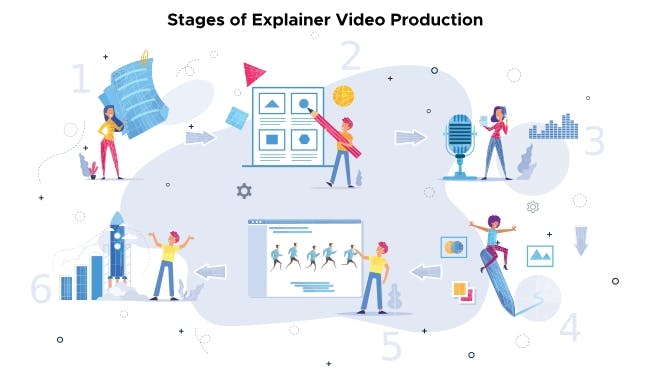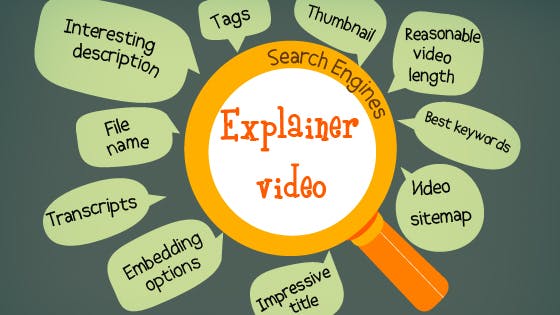Explainer videos: how-to, types and examples
Jun 8th, 2023

Contents
What is an explainer video?
Types of explainer videos with examples
How to make an explainer video
Should you make an explainer video?
An explainer video is an effective and memorable way to make an impression on your customers, introduce your company, describe the products and services, and illustrate how they can solve clients’ problems. Explainer videos are designed to entertain and inform viewers. Customers are more likely to consider your product useful if you provide educational and engaging content.
The video captures the attention better than any other format, including written text or static graphics, as it influences both audio and visual perception of information. Thus, explainer videos will be an excellent addition to your marketing strategy. They will help you bring more customers, increase conversion rates and deliver marketing messages to your target audience.
What is an explainer video?
Explainer video is a short video that describes and promotes the company’s product or service. Explainer videos are typically used to engage potential customers, tell a brand’s story or launch a new product. The main purpose of explainer videos is to communicate the value of the offering in the shortest possible time. Companies often place videos on landing pages and social media platforms, incorporate the videos into emails, or use them in blog posts.
The primary characteristic of the explainer video is simplicity. It is both informative and educational. Explainer video simplifies complicated ideas by breaking them into basic concepts that are easy to perceive. They help visualize data, elicit viewers’ emotions, and make the information memorable. Explainer videos are usually shorter than documentary or entertainment ones, as they often focus on one important point. The ideal explainer video includes the problem, the solution, the method of how the product solves the problem, and the call to action.

The key components of the explainer video include script, storyboard, actors, voiceover, sound effects, background music, characters, infographics, and animation. The script is the most crucial element of any explainer video as it determines its success and brings together both visual and audio components. A storyboard is the visual representation of the script. It helps understand how your video will look before it is produced.
Video production usually involves the participation of actors or voiceover artists. The purpose of voiceover in an explainer video is to present the product in a favorable light, so choosing the actor who captures your brand voice is essential. Background music and sounds create the overall atmosphere of the video and affect the viewers’ experience. Animated explainer videos often use characters to shape an engaging story or establish an emotional connection with the audience. Charts, diagrams, and motion graphics allow for illustrating numbers and statistics and explaining complex topics in simple terms.
Types of explainer videos with examples
We will describe different types of explainer videos with examples to help you choose the best option for your business.
General animated explainer videos
This is the most common animated format that does not require actual footage. 2D and 3D animated explainer videos are perfect for presenting digital products with intangible features, such as software. Sometimes it is impossible to demonstrate applications or services in live-action videos as they have few physical attributes. So, animated explainer videos are the best choice for this purpose. Moreover, with this type of explainer video, you can show the product benefits in greater detail, replicate customer experience using characters and visualize critical functionality.
2D animated videos are usually more cost-effective compared to 3D ones. 2D explainer videos look like cartoons with characters and backgrounds in 2-dimensional space. 3D videos, in contrast, are more realistic as they demonstrate things in 3-dimensional space, so they look like real objects. 3D animated videos are suitable for showcasing products at the prototype stage when it is challenging to shoot a live-action video.
Motion graphics explainer videos use various cinematic techniques, including animation and visual effects. These videos often omit characters and focus primarily on abstract concepts, such as ideas and processes. Many companies prefer motion graphics videos over other types of explainer videos for professional reasons. In addition, motion graphics videos look more realistic and less cartoon-like, so the brands are not at risk of producing videos that look childish.

Expert explainers
Expert videos usually depict a person or a group of people explaining the concept. These explainers allow for gaining viewers’ trust as they portray real professionals presenting the product characteristics or telling the brand’s story. In these videos, the founders of the business often describe how the startup was launched and how it has evolved over time. The goal of expert explainers is to humanize the brand, build a strong emotional connection with the audience, communicate the brand identity, and remind the customers that the company is a group of real people working together to make something valuable for their clients.
Expert explainers can differentiate your brand from the competition by highlighting its unique characteristics. For example, suppose your business mission is dedicated to environmental protection, social justice, or health issues. In that case, the animated video with the founder’s story will inspire the customers and improve the perception of your company. Generally, clients are more inclined to trust professionals in their field, so expert explainers will help your brand establish the audience’s loyalty.
Live-action explainers
Live-action explainer videos are created with actual filmed video footage. Sometimes, the footage is combined with animation, motion graphics, or other components. Live-action explainers are the most complex format as the production is quite costly and requires many elements, including actors, crew, and location. However, this format allows you to reach out to your audience on a more personal level and convey emotions.
When you choose the live-action video to showcase your product or service, you can demonstrate how actual customers use it. While animated and motion graphics videos are innovative and leave space for imagination, live-action explainers provide a more crucial ingredient: the human factor.
Product explainers
Product explainer videos are focused on explaining product features and characteristics. They highlight the way a specific product works in the most simple words possible, the problems it can solve for customers, and the reasons they should buy it. The main aim of the product explainer is to attract prospective clients to the sales funnel. If you introduce the product to the market, product explainers will be excellent material for an effective marketing campaign.
In the era of online shopping, product explainer videos help customers understand what the product looks like and what to expect from it. Product explainers are at the top of the marketing funnel, so you can use these videos across a range of different platforms, including your website, social media pages, or blog. With product explainer videos, you can build brand awareness, improve conversion rates and encourage engagement.
“How-to” explainers and tutorials
The classic “how-to” explainer videos are step-by-step instructions on the different ways you can use a specific product. A great “how-to” explainer videos answer both questions: “how” and “why”. These videos explain why the product or service exists, why it is valuable, and how it functions. If your product has a broad set of features or particular unique characteristics that distinguish it from other solutions, you can use animated “how-to” explainers.
There are several categories of “how-to” explainers, including tutorials and product demos. Tutorials or instructional videos are usually based on popular search queries and might not feature a product or service. These videos are often short and aimed at people at the initial stage of buyers’ journey. You can share product tutorials on social media platforms and blogs.
Product demos are intended for customers with a strong desire to buy the product. The sales team places them on the company’s website, product pages and shares the videos on social media. Product demos explain how the product works in a real-world scenario and demonstrate the variety of its applications and the value it brings to its users or buyers.
Screencast explainers
Screencast video is the kind of product explainer that uses a digital recording of a computer screen combined with a voiceover. This format is very affordable and does not require significant expenses. Compared to animated explainers, screencast videos focus more on the technical aspects of the platform or application, specific software features, and user experience without adding any graphical elements.
Marketers often use screencast videos to advertise and promote SaaS companies and mobile applications. Screencast explainers will be helpful for potential customers who plan on purchasing the product and want to understand how it works step by step. These videos are very convenient for explaining the product functions as the customers do not have to read large amounts of text. Besides, screencast videos serve as a great sales tool that enables you to demonstrate the competitive advantages and benefits of the product.
Business case study
A business case study is a marketing video showing how the customers have successfully used the company’s product. Case studies demonstrate “before” and “after” states and showcase the process of using the product. A business case study is more than an explainer video — it illustrates the product’s features and the value the client receives through them instead of a straightforward demo or product presentation. Successful case study videos often include customer interviews, demonstrate how the business solves client issues, and use facts and statistics to illustrate the story.
The benefit of this format is the focus on the customer. The brand tells a story from the customer’s point of view rather than describing the product’s advantages. It helps shift the attention from the company and highlight the results achieved by the users. Case study videos are persuasive, engaging and help evoke an emotional response from the audience.
Infographic animation
Infographic animation lets you present the information with illustrations, images, charts, text, and other graphic elements. This educational video explains a concept in an engaging and straightforward manner. Infographic videos are usually short and concise, based on customer problems. They include the brand’s colors and animated characters that reflect brand identity to increase recognition.
Infographics will be useful for organizations that put a great emphasis on reporting, such as universities, governmental organizations, or non-profit agencies. You can use this type of video across a variety of platforms, including your website or blog, newsletters, promote it on social media sites, and seed it through dark social channels. Infographic animated explainers are perfect as year-end review videos. This format is brilliant for providing information that is difficult to comprehend in other forms.
Minimalistic/whiteboard animation
Minimalist explainer videos focus on using clean graphic elements, concise marketing messages, simple design, and eliminating unnecessary data and visual objects. Minimalistic videos bear a resemblance to whiteboard animation, which used to be very popular some years ago. The main similarity is the white/light background often used in minimalistic explainer videos, basic palette, clear graphics, and absence of excessive components.
Minimalistic animation videos are very cost-effective and easy to create. This format will be a good option for your brand if you want to tell a story or provide facts and figures. Minimalistic videos will help clarify the complex topic while making it entertaining.
How to make an explainer video
The process of creating an explainer video is managed by a video producer and includes several essential stages: development, pre-production, production, post-production, and distribution. Now we will describe each step in more detail below.

Development
Development is the first step of video production. At this stage, you need to develop the concept, construct a brief story outline and prepare the script draft. You should define the objectives, determine the target audience and figure out the plan. The main elements of the development stage are the idea, timeline, plan, and budget.
Developing the animated video requires defining the key messages you want to communicate in your video. Then you should create a brief document containing the main ideas for scriptwriters.
Pre-production
During the pre-production stage, you need to write the script, prepare a storyboard, hire the cast and production team, scout locations, find the equipment, and plan a production schedule. This phase plays a vital role in the overall production process as the planning influences the success of the following stages and the overall video quality. The pre-production stage requires making many decisions, so you should act responsibly.
When making animated videos or motion graphics, you should decide what characters will suit the story and how they will reflect your overall branding.

Production
At the production stage, the shooting begins. If you plan to create the animated explainer video, infographic animation, or whiteboard animation, 2D and 3D artists will design the visual components of your video mentioned in the script and storyboard.
Post-production
Now you must edit the video, add visuals, music, and sound effects. It is time to put together the previously developed elements, such as script, storyboard, infographics, and voiceover, to produce a polished, entertaining video.

Distribution
Once the explainer video is ready, you can share it through available marketing channels, place it on your website or add it to the blog post. You can also upload the explainer video on Youtube and share it with your email list. Customers would rather watch a video demonstrating your product than read an email about it. The explainer video will be a perfect addition to your sales pitch to increase the chances of converting your prospects into buying customers.
Should you make an explainer video?
Definitely yes. The explainer videos are educative, informative, and engaging. This is a perfect way to convey information, tell your brand’s story, showcase the product’s features and benefits, and draw the attention of your target audience. An explainer video is a wonderful reflection of your brand culture and identity. It is more shareable than text and allows for increasing conversion rates by 80%. People usually prefer videos over other types of content as they save time and provide complex data in a simple and digestible form. With an explainer video, you can show the customers your story instead of telling it.
